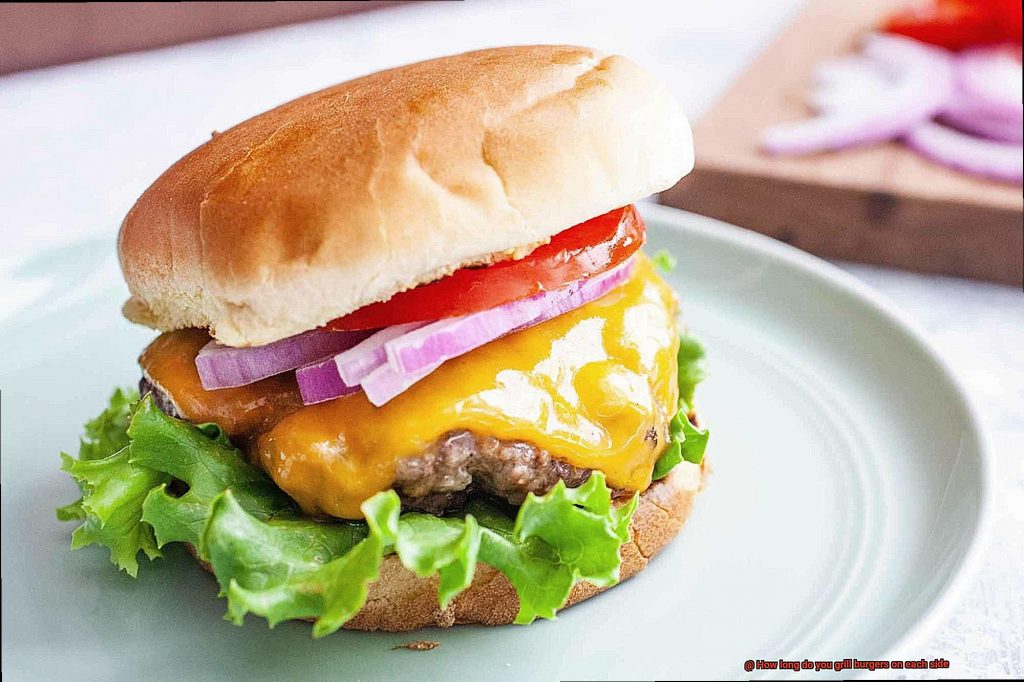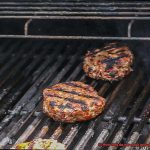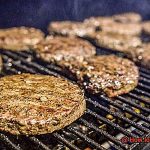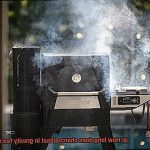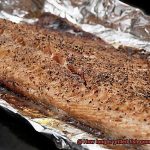Summer is here, and you know what that means – it’s grilling season. There’s nothing quite like the sound of burgers sizzling on the grill, filling the air with mouth-watering aromas. But if you’re not sure how long to cook your burgers for, things can quickly go from delicious to disastrous.
Imagine this: you’re outside grilling up some juicy burgers for your loved ones. You’re flipping them every now and then, but you’re not sure when they’re ready. Are they cooked all the way through? Or are they still raw in the middle? It’s a common dilemma that can leave even seasoned grillers scratching their heads.
That’s where we come in. In this blog post, we’ll teach you everything you need to know about cooking perfect burgers on the grill. We’ll cover all the factors that can affect your cooking time – from patty thickness to temperature – so that you can get it just right every time.
Whether you prefer rare, medium or well-done burgers, we’ve got you covered. We’ll walk you through each step of the cooking process and provide expert tips on seasoning and toppings to take your burger game to the next level.
So grab a cold drink, fire up the grill and let’s get started. By the end of this post, you’ll be a burger-grilling pro in no time.
Contents
The Perfect Grilling Time for Beef Burgers
As a grill master, I know that the perfect grilling time for beef burgers is crucial to achieving that juicy, mouthwatering patty we all crave. The cooking time can vary depending on several factors such as patty thickness, grill temperature, and personal preference for doneness. But don’t worry, with these tips and tricks, you’ll be grilling up perfect burgers every time.
Firstly, a 1/2 inch thick beef burger should be grilled for about 3-4 minutes on each side for a medium-rare doneness. For a medium doneness, grill for 4-5 minutes on each side. And for well-done burgers, grill for 6-7 minutes on each side. However, these times are just guidelines and may need to be adjusted based on personal preference and grill conditions.
In addition to the thickness of the patty and grill temperature, it’s essential to consider the type of meat you’re using. For example, turkey or chicken burgers require longer cooking times to reach a higher internal temperature than beef.
Using a meat thermometer is vital to ensuring your burgers are cooked all the way through. A medium-rare burger should have an internal temperature of 135-140°F, a medium burger should be at 145-160°F, and a well-done burger should be at 160-165°F.
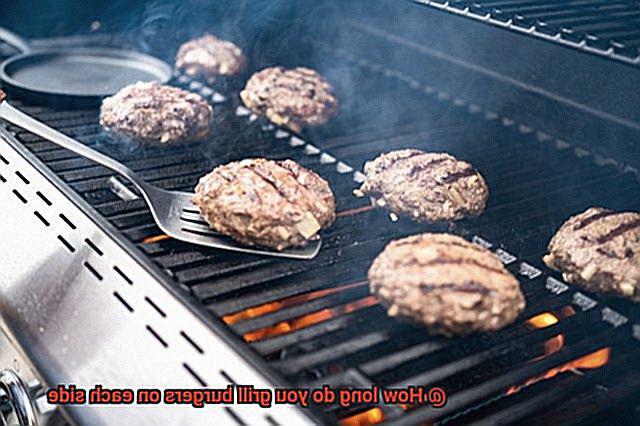
Flipping the burgers too often or pressing down on them with a spatula can result in dry, tough patties. It’s best to only flip the burger once and resist the urge to press down on it. And once your burgers are done, let them rest for a few minutes before serving. This allows the juices to redistribute throughout the meat and results in a more flavorful and juicy burger.
To sum up, here are some key takeaways:
- For a 1/2 inch thick beef burger, grill for 3-4 minutes on each side for medium-rare, 4-5 minutes for medium, and 6-7 minutes for well-done.
- Use a meat thermometer to ensure your burgers are cooked to your liking.
- Avoid flipping the burgers too often or pressing down on them with a spatula.
- Let your burgers rest for a few minutes after grilling to allow the juices to redistribute throughout the meat.
Varying Grilling Times for Different Types of Meat
Grilling burgers is a favorite pastime for many, but getting the cooking time just right can be tricky. The key to perfectly cooked burgers lies in understanding the varying grilling times for different types of meat and adjusting them based on factors such as thickness, type of meat, and shape. Here are five sub-sections to help you master the art of grilling burgers.
Varying Grilling Times for Different Types of Meat
Different meats require different cooking times on the grill. Beef burgers are typically thicker and require more cooking time than turkey or chicken burgers. For medium-well beef burgers, grill each side for 6-8 minutes. Alternatively, grill turkey or chicken burgers for around 5-6 minutes on each side until they reach an internal temperature of 165°F.
Adjusting Cooking Time Based on Thickness
The thickness of your burger affects cooking time. Thicker burgers need longer cooking times than thinner ones. A good rule of thumb is to grill each side of a 1/2 inch thick burger for about 3-4 minutes for medium-rare doneness, 4-5 minutes for medium doneness, and 5-6 minutes for well-done burgers.
Grilling Time Depends on Heat and Type of Meat
The heat of your grill and the type of meat you’re using also impact grilling time. Leaner meats like turkey or chicken burgers need less time to cook than beef burgers to prevent them from drying out. Use a meat thermometer to ensure that your burgers reach an internal temperature of 160°F for beef and 165°F for poultry before removing them from the grill.
Adjusting Cooking Time Based on Shape
The shape of your burgers can also affect cooking time. If your patties are uneven or thicker in certain areas, adjust the cooking time accordingly to ensure even cooking throughout.
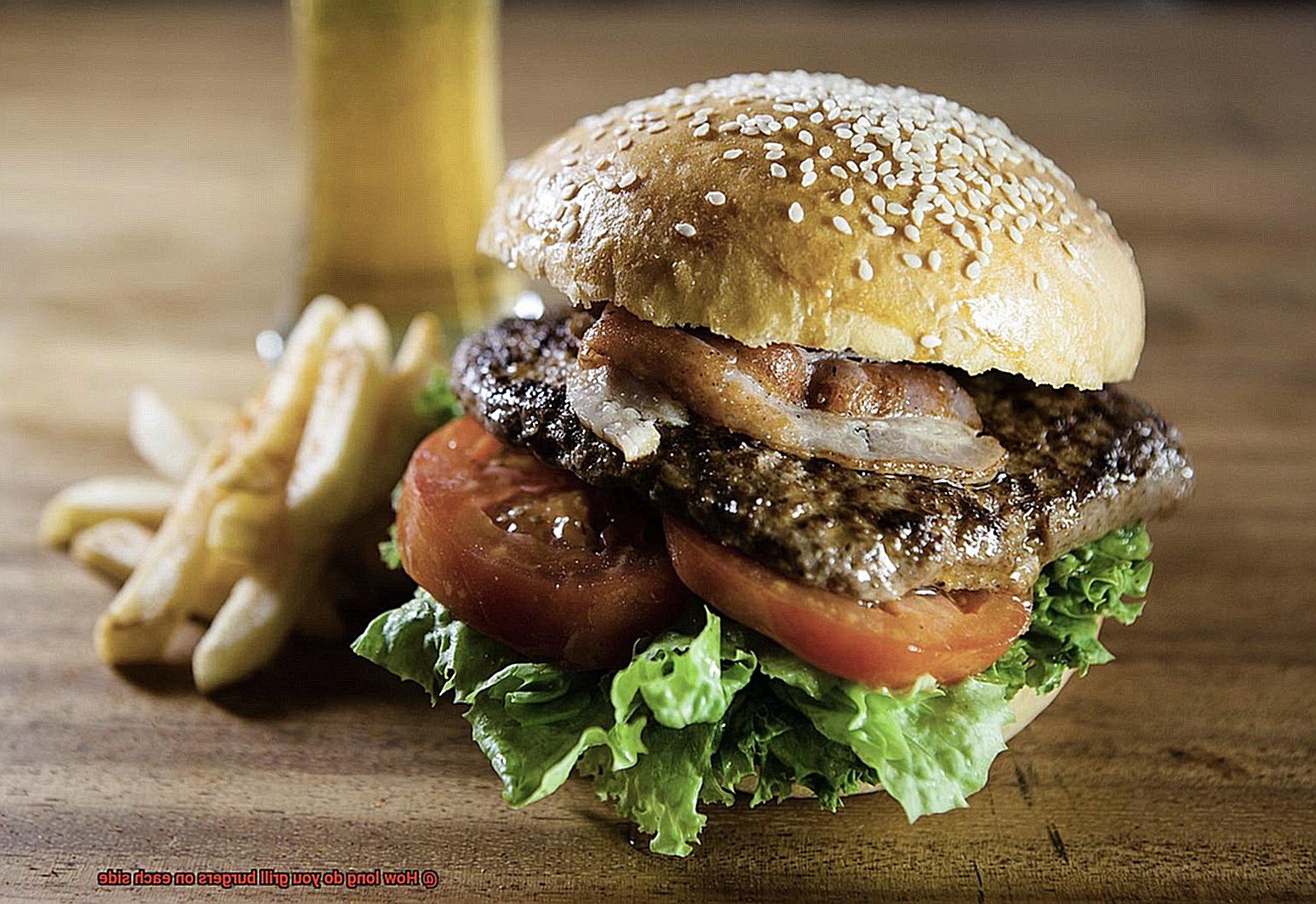
Resting Burgers Before Serving
After grilling, let your burgers rest for a few minutes before serving. This allows the juices to redistribute throughout the meat, resulting in a more flavorful and juicy burger.
Tips to Help You Grill Perfect Burgers Every Time
Grilling burgers is a beloved American pastime, but it can be challenging to get the perfect burger. To achieve a juicy, flavorful patty, it is crucial to pay attention to cooking time, patty thickness, and resting time. Here are some tips to help you grill perfect burgers every time.
Cooking Time
Timing is everything when it comes to grilling burgers. The recommended cooking time is 4-5 minutes per side for medium-rare, 5-6 minutes per side for medium, and 6-7 minutes per side for well-done. However, this can vary depending on your patty’s thickness and how hot your grill is. To avoid undercooking or overcooking your burger, use a meat thermometer to check the internal temperature.
Patty Thickness
The thickness of your patty plays a significant role in how long it takes to cook through. A thicker patty requires more time to cook than a thinner one. To ensure that your burger cooks evenly, make an indentation in the center of the patty before grilling. This helps prevent the burger from puffing up in the middle and ensures even cooking throughout.
Resting Time
Resting time is a crucial aspect of grilling burgers that often gets overlooked. After cooking, let your burger rest for a few minutes before serving it. This allows the juices to redistribute throughout the meat and makes for a more flavorful and juicy burger. Cover the burger with foil or a lid to keep it warm while resting.
Flipping Technique
Flipping your burger too often can cause it to dry out and lose its shape. Instead, flip the burger only once during cooking to maintain its shape and juiciness. Use a spatula to flip the burger gently and avoid pressing down on it, as this will cause the juices to escape.
Meat Thermometer
Using a meat thermometer ensures that your burger is cooked all the way through. The internal temperature of your burger should reach 130-135°F for medium-rare, 135-145°F for medium, 145-155°F for medium-well, and 155-165°F for well-done. Insert the thermometer into the thickest part of the patty to get an accurate reading.
How Thick Should Your Patties Be?
One crucial factor to consider is the thickness of your patties. Burgers that are too thin can dry out quickly and become overcooked, while patties that are too thick may not cook evenly throughout. So, how thick should your patties be?
The general rule of thumb is to aim for patties that are about 3/4 inch to 1 inch thick. This thickness ensures even cooking throughout the patty while still retaining a juicy and flavorful center. However, this isn’t a one-size-fits-all solution as personal preference and the type of burger being grilled can affect thickness.
For a medium-rare burger, slightly thicker patties are suggested to ensure the center stays pink and juicy. On the other hand, a well-done burger may be better suited with thinner patties to ensure the entire patty is cooked through.
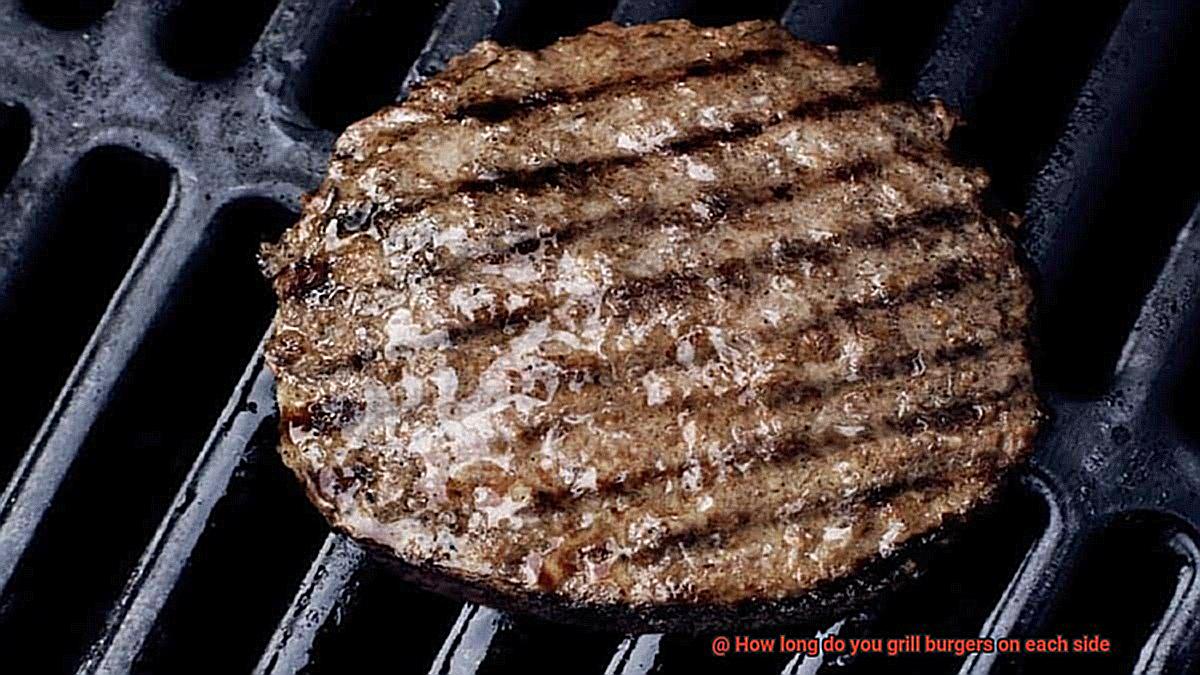
While thickness plays a crucial role in the perfect patty, shape also matters. Have you ever experienced a burger that puffs up in the center during cooking? Not only is it frustrating, but it can lead to uneven cooking. To prevent this, shape your patties with a slight dimple in the center that helps them cook evenly throughout.
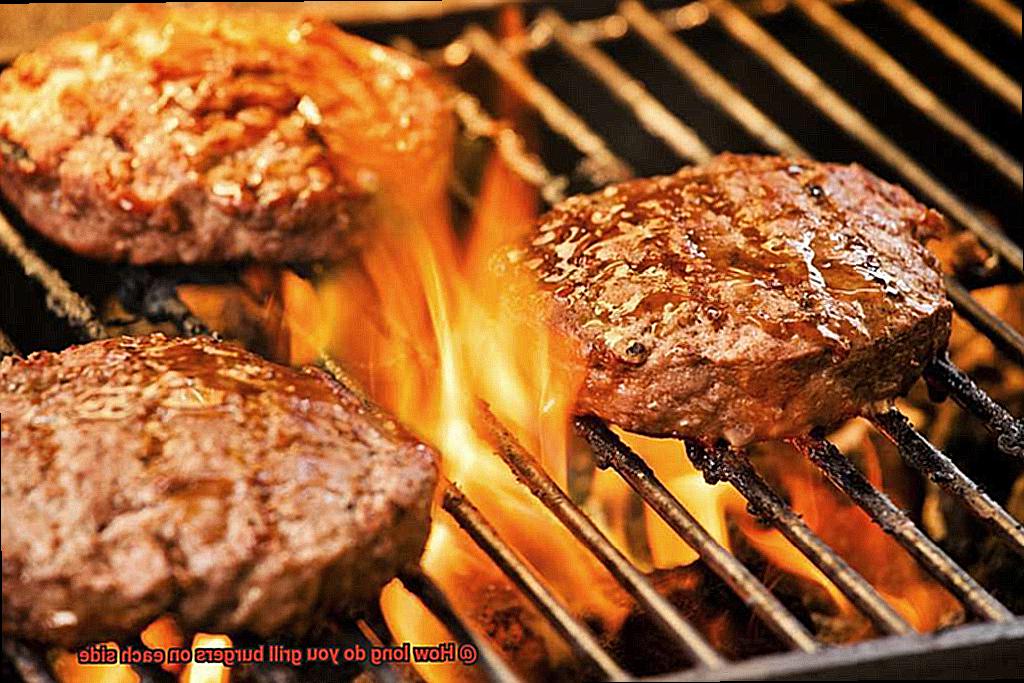
It’s essential to note that patties tend to shrink as they cook. Therefore, starting with slightly larger patties than your desired end result is recommended. For instance, if you want a 4-inch patty, start with a 4.5 or 5-inch patty to account for shrinkage.
What Kind of Grill Should You Use?
The first step is choosing the right grill. As an expert in this field, I know that selecting the perfect grill for your needs is just as important as selecting the right ingredients.
Let’s explore the different types of grills available in the market. Gas grills are a popular choice for those who value convenience and ease of use. These grills heat up quickly and offer a consistent temperature, making it easier to cook your burgers evenly. Plus, they require minimal cleanup. However, gas grills can be expensive and require regular propane tank refills. So, if you’re on a tight budget or looking for that classic smoky flavor, gas grills may not be the best choice for you.
Charcoal grills are a classic and affordable option for grill enthusiasts who crave that smoky flavor. These grills provide a unique taste that cannot be replicated by gas grills. However, they take longer to heat up and require more attention when it comes to temperature control. If you’re patient and willing to put in some extra effort, charcoal is the way to go.
Electric grills are ideal for apartment dwellers or those with limited outdoor space. They are easy to use and require minimal cleanup. Electric grills also offer a consistent temperature, which makes it easier to grill your burgers evenly. However, they don’t provide that same smoky flavor as charcoal or gas grills.
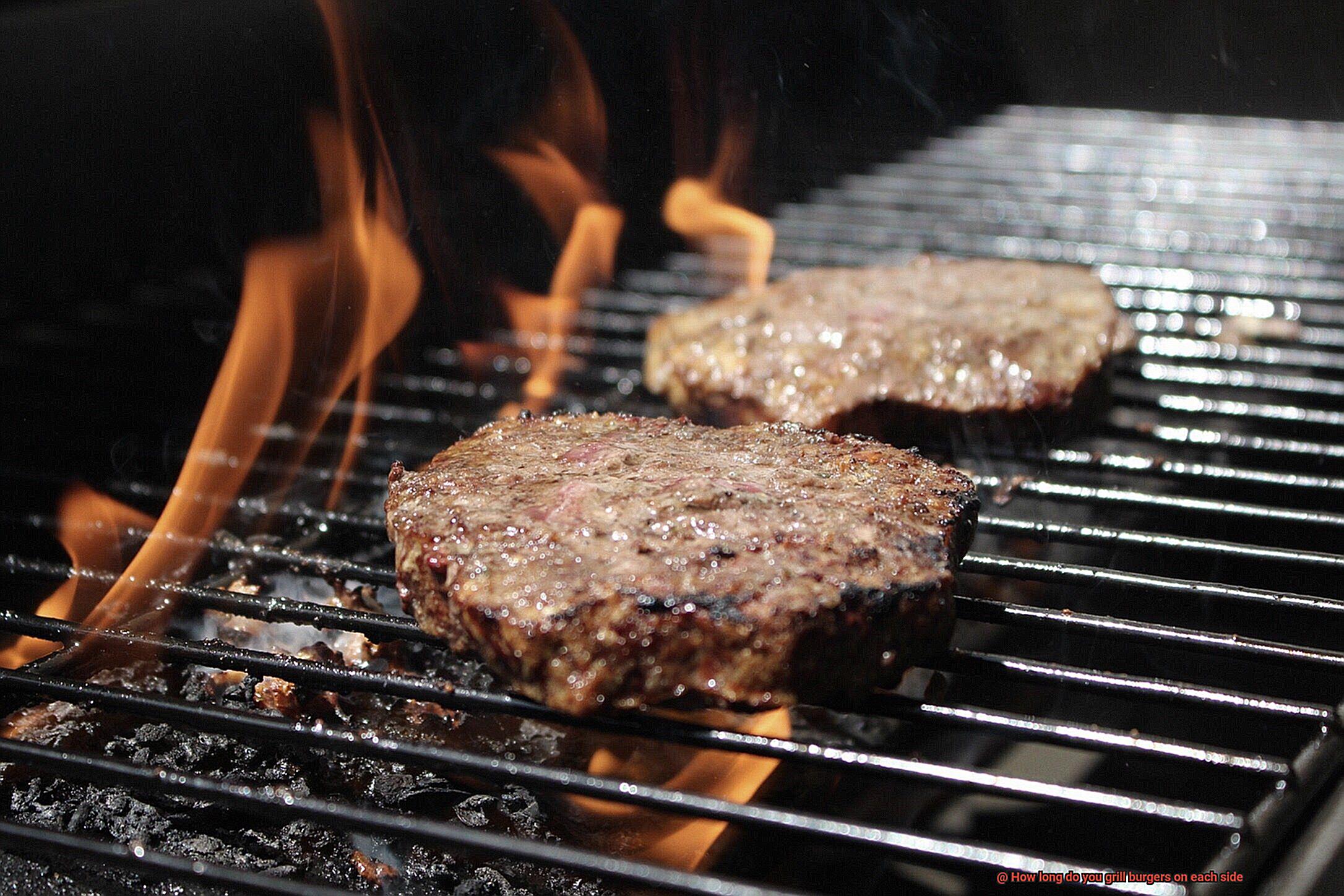
When deciding which type of grill to use, consider your personal preferences and needs. If you value convenience and ease of use, a gas or electric grill may be the best choice for you. But, if achieving that classic smoky flavor is a must-have, go for a charcoal grill.
How Hot Should the Grill Be?
The first step to achieving that perfectly seared, juicy patty is ensuring that your grill is hot enough. But how hot is hot enough? Let’s dive in.
To start, preheating your grill is crucial. Don’t rush this step – it sets the foundation for mouth-watering results. Aim for a high heat of 450-500°F before placing your burgers on the grill. This high temperature sears the outside of the burger, creating a delicious crust while keeping the inside moist and juicy.
Keep in mind that the type of grill you’re using can affect how hot it should be. Gas grills tend to heat up faster than charcoal grills, so adjust your cooking time accordingly. And if you’re using a thicker cut of meat or a frozen patty, lower the heat slightly to ensure that the burger cooks evenly all the way through.
But how do you know if your grill is hot enough? You have two options: use a grill thermometer or test it with your hand. Hold your hand about 5 inches above the grate – if you can only hold it there for a few seconds before it gets too hot, then you’re good to go. If you can hold your hand there for more than a few seconds, then the grill needs to heat up more.
In summary, follow these tips for optimal grilling success:
- Preheat your grill to 450-500°F
- Adjust heat for type of grill and thickness/frozen patties
- Use either a thermometer or hand test to ensure proper temperature
Using a Meat Thermometer to Ensure Safe Eating
Grilling burgers is a quintessential summer activity that many of us look forward to. However, it’s vital to ensure that the burgers are cooked thoroughly to avoid any risk of foodborne illnesses. That’s where a meat thermometer comes in – it’s your trusty tool for ensuring the safe consumption of your grilled burgers.
To start with, preheat your grill to a high temperature of 450-500°F before placing your burgers on it. This will create a delicious crust on the outside while keeping the inside juicy and moist. But how do you know when your burgers are cooked to perfection? The answer is simple – use a meat thermometer.
Insert the probe into the thickest part of the burger, ensuring that it doesn’t touch any bones or the grilling surface. Wait for a few seconds for the temperature to stabilize, and then read the display. If the temperature is below 160°F (71°C), continue grilling until it reaches the desired temperature. An internal temperature of 160°F (71°C) is necessary to kill any harmful bacteria that may be present in the meat.
Apart from using a meat thermometer, there are other essential tips to ensure safe eating of grilled burgers. Firstly, always start with clean hands and surfaces, and keep raw meat separate from other foods. Cook burgers immediately after forming them and avoid pressing down on them with a spatula as it can increase the risk of undercooked meat by causing juices to escape.
Once you’ve cooked your burger, let it rest for a few minutes before serving to allow the juices to redistribute evenly. Finally, clean your meat thermometer after each use to prevent cross-contamination. You can use hot soapy water or sanitize it with a solution of one-part vinegar and one-part water.
Letting Your Burgers Rest After Grilling
As a burger aficionado, I’m here to tell you that there’s more to grilling the perfect burger than just cooking it to the right temperature. One crucial step that many people overlook is letting your burgers rest after grilling. But why is this so important?
First and foremost, resting your burgers allows the juices to redistribute throughout the meat. After cooking, the juices naturally move towards the center of the patty, leaving the outer edges dry. By letting the burger rest for 5-10 minutes after grilling, those juices have time to evenly distribute throughout the meat, resulting in a more flavorful and juicier burger.
To properly rest your burgers, remove them from the grill and place them on a clean plate. Cover them with aluminum foil and let them rest for 5-10 minutes, depending on the thickness of the patty. Don’t be tempted to cut into them immediately after grilling – this will cause all of those delicious juices to escape. Instead, give them time to rest and cut into them when you’re ready to serve.
But did you know that letting your burgers rest also helps to kill any harmful bacteria that may be present? During the resting period, the internal temperature of the burger continues to rise, which can help eliminate any bacteria that could cause foodborne illness. So not only does resting your burgers make them tastier, it also makes them safer to eat.
Additionally, letting your burgers rest after grilling can make them easier to handle. Freshly cooked burgers are often too hot to handle and can fall apart easily. Allowing them to rest gives them time to cool down slightly, making them easier to handle without falling apart.
Here’s a quick recap of why letting your burgers rest after grilling is so important:
- Resting allows the juices to redistribute throughout the meat for a more flavorful and juicier burger.
- Resting helps kill any harmful bacteria that may be present in the meat.
- Resting also makes the burgers easier to handle without falling apart.
Conclusion
In conclusion, grilling the perfect burger requires precision and attention to detail.
It’s important to preheat your grill and cook your burgers on high heat for about 3-4 minutes per side for a medium-rare patty. However, cooking times may vary depending on the thickness of your burger and personal preference.
With these tips in mind, you’ll be able to impress your friends and family with juicy, delicious burgers hot off the grill.

